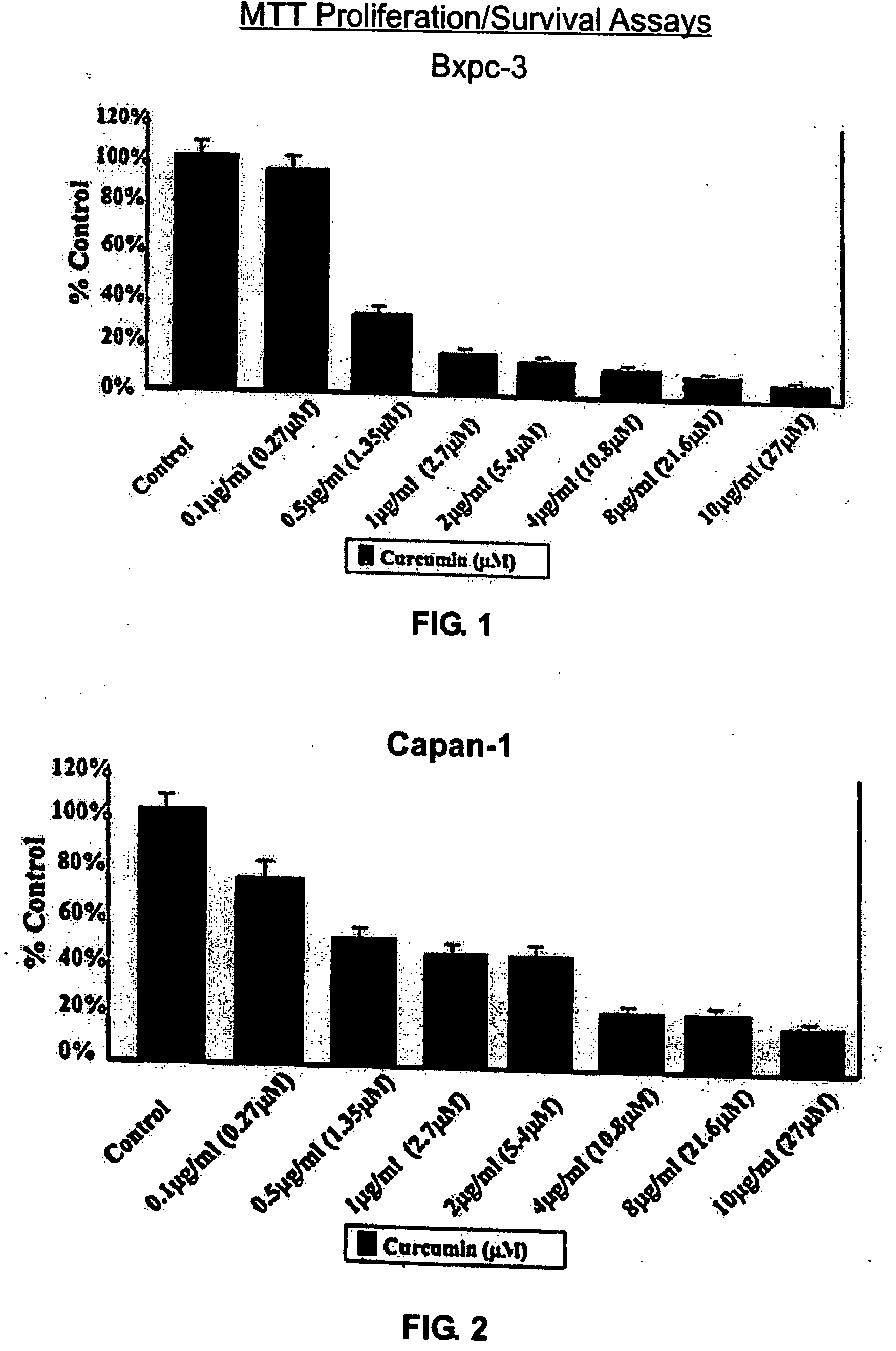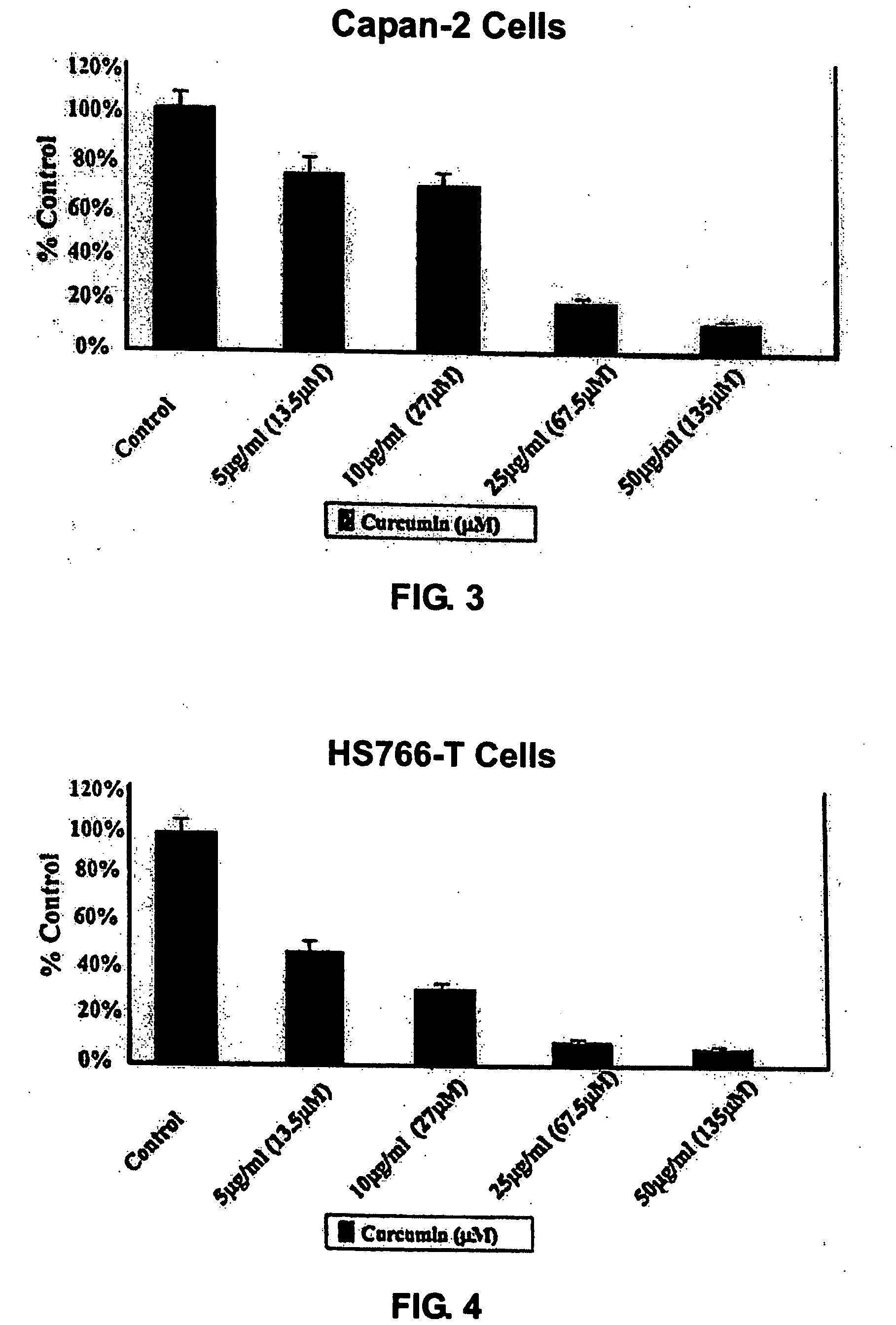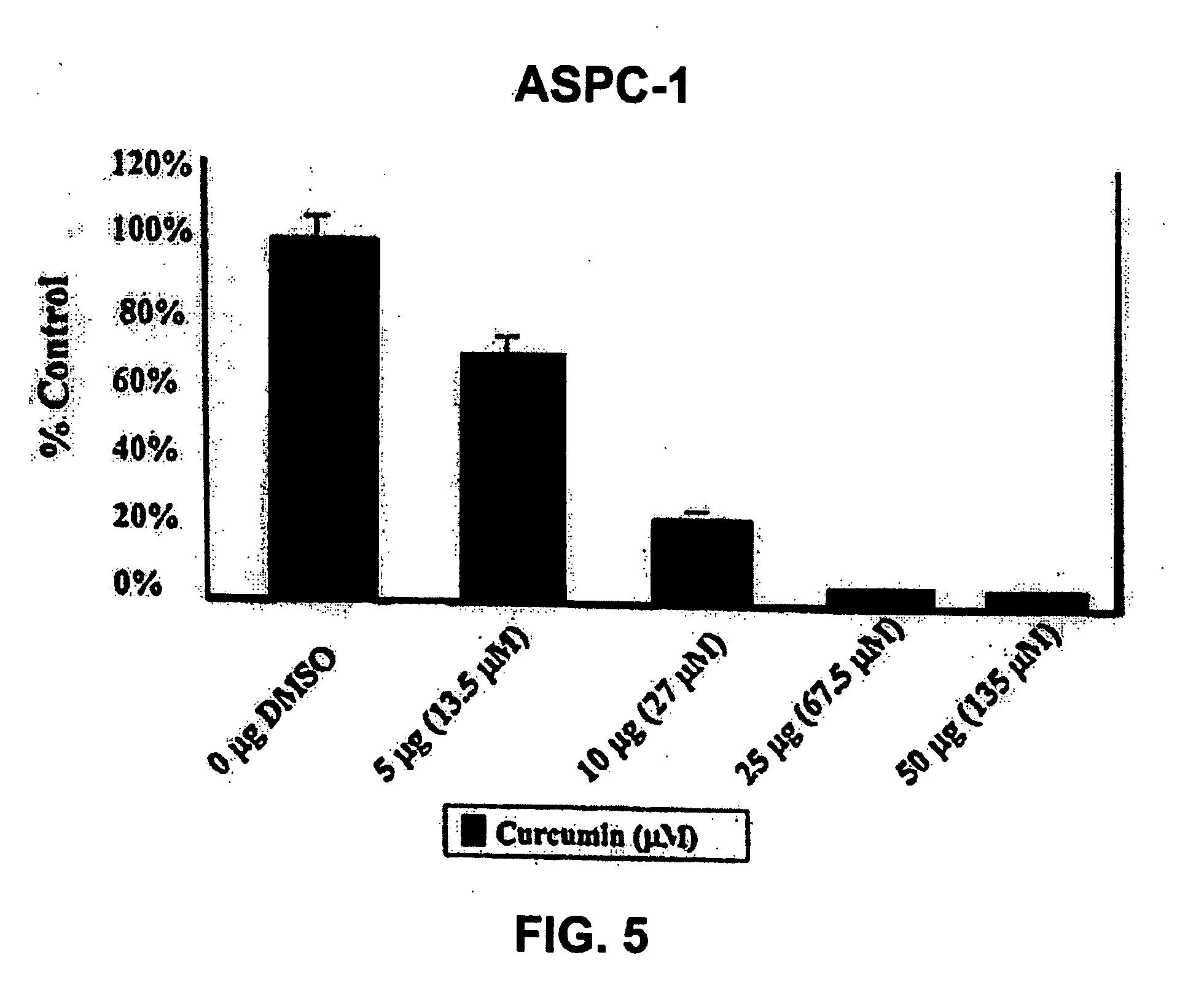Liposomal curcumin for treatment of cancer
a technology of liposomal curcumin and cancer, which is applied in the field of cancer therapeutics, can solve the problems of poor bioavailability of curcumin after oral administration, high uncertainty of antitumor effects, and inability to adequately treat pancreatic cancer
- Summary
- Abstract
- Description
- Claims
- Application Information
AI Technical Summary
Benefits of technology
Problems solved by technology
Method used
Image
Examples
example 1
[0113] Preparation of curcumin-containing liposomes. Liposomal curcumin was formulated using the following protocol. A phospholipid, 1,2-dimyristoyl-sn-glycero-3-phosphocholine (dimyristoylphosphocholine; DMPC) (Avanti Polar Lipids, Alabaster, Ala. 35007) was chosen for the liposomal formulation. The phospholipid was solubilized by dissolving 200 mg of DMPC in 10 ml of t-butanol (Fisher Scientific) and heating the mixture in a 37° C. water bath for 5 minutes. The solution was stored at −20° C. in a container that protected the solution from exposure to light.
[0114] Curcumin (Sigma) was solubilized by dissolving curcumin in DMSO to a final concentration of 50 mg / ml. The solution was also aliquoted and stored in a container that protected the solution from exposure to light.
[0115] To combine the phospholipid and curcumin solutions, 10 ml of DMPC in t-butanol, 0.4 ml curcumin in DMSO and 90 ml of t-butanol were mixed very well and aliquoted into small sterile glass vials containing 2...
example 2
[0117] Curcumin inhibits proliferation / survival of pancreatic cells. Seventy-two hours of exposure to free curcumin inhibited pancreatic cell growth of all five lines tested in a concentration-dependent manner. Controls were exposed to 0.1% v / v DMSO. Proliferation and survival of the pancreatic cells were assessed by MTT assay, a standard colorimetric assay used to measure cell survival and proliferation (Mosman, 1983). MTT (3-[4,5-cimethylthiazol-2-yl]-2,5-diphenyl tetrazolium bromide) is cleaved by living cells to yield a dark blue formazan product. The color is quantitated by spectrophotometer and reflects cellular proliferation and survival. As shown in FIGS. 1-5, pancreatic Bxpc-3, Capan-1, Capan-2, HS766-T and ASPC-1 cells were exposed to free curcumin in varying concentrations for a period of 72 hours. The control for each assay was exposed to 0.1% v / v DMSO.
example 3
[0118] Liposomal curcumin has equivalent or greater anti-proliferative effects than free curcumin. The inventors have examined the effect of free curcumin on the proliferation and survival of five pancreatic carcinoma cell lines (Bxpc-3, Capan-1, Capan-2, HS766T, and Aspc-1). The effects of liposomal curcumin were compared to those of liposomes alone, free curcumin, lyophilized free curcumin and liposomal curcumin. MTT proliferation / survival assay was performed after 72 hours of incubation.
[0119] Exposure to curcumin resulted in significant inhibition of proliferation and survival as assessed by MTT assay in all of these cell lines. FIGS. 5-10 show graphs of the results of the assays using Bxpc-3, Capan-1, Capan-2, HS766-1 and ASPC-1 cell lines, respectively. In the MTT proliferation / survival assay shown in FIGS. 5-10 the pancreatic cell lines were exposed to free curcumin, lyophilized free curcumin (lyophilized curcumin), liposomal curcumin or liposomes without curcumin (liposomes...
PUM
| Property | Measurement | Unit |
|---|---|---|
| Dimensionless property | aaaaa | aaaaa |
| Dimensionless property | aaaaa | aaaaa |
| Dimensionless property | aaaaa | aaaaa |
Abstract
Description
Claims
Application Information
 Login to View More
Login to View More - R&D
- Intellectual Property
- Life Sciences
- Materials
- Tech Scout
- Unparalleled Data Quality
- Higher Quality Content
- 60% Fewer Hallucinations
Browse by: Latest US Patents, China's latest patents, Technical Efficacy Thesaurus, Application Domain, Technology Topic, Popular Technical Reports.
© 2025 PatSnap. All rights reserved.Legal|Privacy policy|Modern Slavery Act Transparency Statement|Sitemap|About US| Contact US: help@patsnap.com



